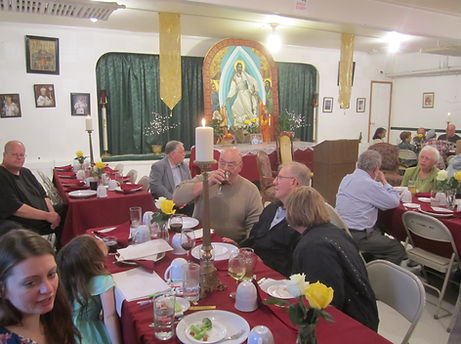top of page
The solemn blessing of the shrine was attended by many Crusaders and Faithful. It was sprinkled with holy water, incensed, and sealed for the Second Coming. The blessing was followed with Divine Liturgy and an exquisite dinner thanking all those who made this monumental step in the Relic Crusade's history possible. The Saints have found a fitting home. Click here for a list of Saints currently enshrined.






bottom of page



